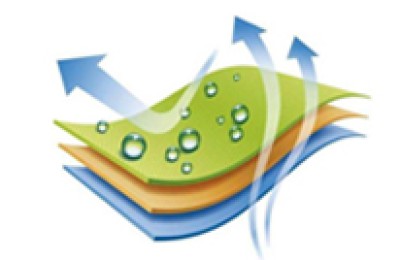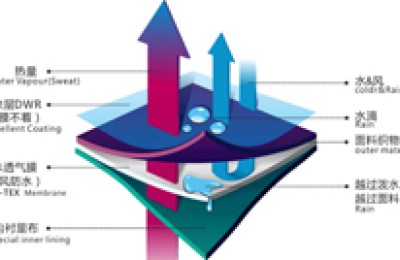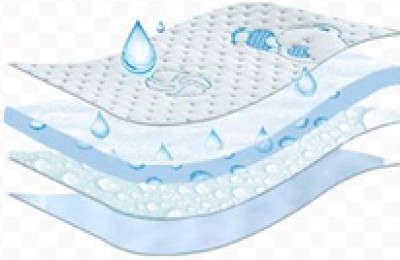Japanese brands that have succeeded in the United States have one thing in common – even if there are obstacles such as low awareness and high prices, each company still fully promotes the advantages of the product and relies on the excellent functionality and quality of the product to win the trust of consumers. recognized. At the keynote speech titled “Capturing the Hearts of Americans! Seizing the Forefront of Japanese Brand Sales” hosted by the Japanese American Association and Women Businessmen Association in New York, USA, MIKIHOUSE Americas President Takeda Hink and Wacoal Wacoal Sports Science Vice President Hiroshi Nagayamaguchi shared his experience in developing the US market. They said that at first the price of their own products was much higher than that of their competitors on the market, and many people questioned this, but the two companies successfully broke through this obstacle by focusing on promoting the functionality of the products. Established the brand’s position in the US market.
Understanding is the prerequisite for cooperation
In 2006, MIKIHOUSE, which had just entered the US market, was sometimes mistakenly heard as Mickey Mouse. Its embroidered T-shirts sell for as much as $200 and its shoes cost as much as $119. Some people asked incredulously: “Who would buy such expensive things?”
In order to gain popularity in the United States, Takeda carried a suitcase filled with company products and visited high-end stores in all regions of the United States. There was an episode: He called a strong store in a certain place to make an appointment for a meeting, and the meeting time given by the other party was 6 am. Takeda thought the other party was joking, so he asked, “Do you know where I am?” The other party replied, “Of course, New York.” Takeda agreed without hesitation and arrived at the agreed time. The person in charge of the store told him: “Companies that do not abide by the agreed meeting time will also have difficulty in strictly abiding by the delivery schedule. Congratulations on breaking through the first hurdle.” Later, he was told that “if the delivery time is not shortened, we will not be able to cooperate.” . Therefore, the Japanese head office decided to adjust the delivery date according to the other party’s time requirements.
Takeda also recalled that when presenting the brand to Bloomingdales CEO Michael Gould, Gould commented: “If this brand is not displayed and sold in an environment that can display its brand concept, it will not be able to highlight its own advantages.” Since then, MIKIHOUSE has established a strong cooperative relationship with Bloomingdales.
The brand also once sold wholesale to famous boutiques, but when the person in charge explained the functions of the brand products to the buyers, the other party said: “Our customers will not understand such complicated instructions.” Then MIKIHOUSE terminated Cooperation with this store because the brand’s belief is “not to cooperate with stores that do not understand the function of the product.” Takeda said: “Buyers’ understanding of product features is a key factor in successful cooperation. We firmly believe that once children wear MIKIHOUSE shoes, they will no longer want to wear shoes from other brands, and they will become repeat customers of the brand.”
Try on and accumulate popularity
Wacoal began selling the CW-X series in the United States in 2002. At that time, leggings from Nike and other brands sold for $50 to $60, while CW-X’s products cost $100. Because it is considered an “unclear Japanese brand and very expensive”, when the sales staff called Paragon, a long-established sporting goods store in New York, they immediately hung up on the phone. This happened many times in a row. Therefore, the president of Wacoal Sports Science personally came to the door and said to the company’s buyer: “Our products are absolutely good. Please put them on and run around to experience them.” After the experience, the cooperation between the two parties began. The buyer later said: “This is the most successful purchase of goods in my career.”
Yamaguchi emphasized: “Although our recommended selling price is much higher than other companies, we do not feel that the price is set unreasonably. There is always a reason for the high price, so understand the product performance and eliminate understanding with customers The difference matters.”
In the same year, CW-X sponsored the triathlon competition held at Alcatraz Island in San Francisco, allowing famous professional triathletes to wear the brand’s products, and set up a tent product promotion area to listen carefully to the opinions of those who wore the brand’s products. Opinions from contestants who have completed all events. Now, the brand still maintains the practice of setting up tents at marathon conference venues for public relations activities. The “please try it on first” action has accumulated higher popularity for the brand.
At this lecture, Yamaguchi personally demonstrated the CW-X product for auxiliary line cutting based on the principle of tape wrapping, and said: “We are willing to support people who love sports so that they can enjoy sports throughout their lives. .”
Both Yamaguchi and Takeda believe that brand management must not deviate from the basic concept of the brand. Takeda said: “It takes a certain amount of time for buyers to understand the brand concept and for product sales to be effective. However, if the brand and the concept do not agree to cooperate, you may encounter big trouble. In the end, what matters is Will the children smile knowingly because they are wearing our costumes?”




